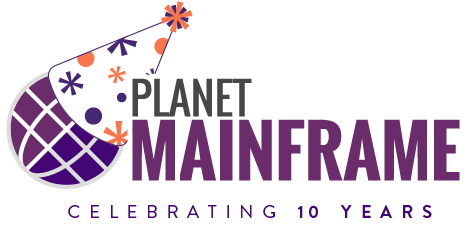For decades, TN3270 terminal emulators have been a staple for accessing mission-critical mainframe applications. However, as cyber threats evolve and legacy systems strain under new compliance demands, it is becoming increasingly clear that traditional thick-client TN3270 emulators are showing their age. It’s time to ask the hard question: are they protecting your business or putting you at risk?
In this article, we explore five compelling reasons why organizations should consider replacing their existing TN3270 emulators with a modern, two-tier, web-based alternative.
1. Enhanced Security and Compliance
There are two major ways to improve mainframe application security. One is by eliminating the inherent security issues traditional TN3270 emulators pose; the other is by utilizing more secure mainframe access methods through the implementation of Multi-Factor Authentication, Single Sign-on, and Identity Access Management solutions.
Modern web-based emulators offer improved security features, reducing the attack surface and providing better protection for sensitive mainframe data.
The Risks
Traditional TN3270 emulators have several significant security vulnerabilities that can expose organizations to various risks such as:
- Exposed Terminal Emulation Code: Thick-client emulators often rely on code components, typically written in Java, running on server or user devices. This exposed code can be compromised and exploited by attackers to gain unauthorized access to mainframe applications.
- Reliance on Outdated Browsers: Many legacy TN3270 emulators depend on Java and Java plugins, which are no longer supported by modern browsers. Expose Unaudited Macros: User-created TN3270 macros can bypass oversight, potentially storing unencrypted credentials or executing large numbers of transactions without monitoring.
- Unencrypted Login Credentials: Macros often store mainframe credentials in plain text, making it easy for attackers to access systems if a workstation is compromised.
- Automated Macro Transactions: Macros can execute large numbers of transactions, such as submitting multiple Customer Information Control System (CICS) transactions from external sources like Excel spreadsheets which can lead to runaway CPU processing or unintentional data exposure.
- Lack of Access Audit Trail: Many legacy TN3270 emulators don’t log user identity or session origin, making it difficult to trace unauthorized access, investigate incidents, or detect suspicious activity in time.
- Exposed 3270 Fields: In traditional emulators, 3270 screen field settings (hidden, protected or unprotected) are enforced by code running on the user device which could allow attackers to view hidden fields or modify protected fields.
- VPN-Dependent Encryption: Relying on VPNs for security can inadvertently expose other IT systems and assets to unauthorized access, especially when only needing to provide third party access to specific, well-controlled mainframe applications.
These vulnerabilities highlight the need for organizations to consider a modern alternative that addresses these security concerns and provides more robust protection for mainframe resources.
Implementing Modern Security Practices
The days of using an 8-digit, case-insensitive USERID and password are numbered. Today’s digital landscape will not allow such archaic practices. Advanced security solutions are designed to seamlessly integrate with existing infrastructure and provide a fortified gateway between your legacy systems and modern web environments. Let us look at some of the key security practices in modern web-based TN3270 solutions:
- End-to-End Encryption: Uses z/OS AT-TLS to secure connections with FIPS 140-2 and TLS 1.3 compliance, keeping mainframe data encrypted in transit and protected from external threats.
- Support PassTicket Generation: Enable secure, token-based authentication across the mainframe without requiring users to re-enter passwords.
- LU Name Assignment: Provides greater session control by letting administrators assign Logical Unit (LU) names based on user ID, IP address, or other criteria—improving visibility and enforcement of access policies.
- z/MFA Integration: Boost security by integrating with z/OS MFA. This multi-layered approach ensures that users are verified not only by something they know (like a password) but also through something they have (like a mobile device or fingerprint).
- SSO Integration: Strengthen access control with SSO integration, by enabling SSO for your 3270 applications that seamlessly connect with solutions supporting SAML or OIDC.
2. Simplified Maintenance and Administration
Replacing thick-client TN3270 emulators with web-based alternatives can significantly reduce the maintenance and administration costs associated with providing secure mainframe access. Here are some examples:
- Elimination of Client-Side Installations: These emulators are installed directly on the mainframe and accessed through standard web browsers, eliminating the need for individual installations on server or user workstations.
- Centralized Updates: Maintenance and updates can be performed centrally on the mainframe, ensuring consistent functionality across all users without requiring individual server or workstation interventions.
- Reduced Compatibility Issues: Web-based two-tier emulators are less vulnerable to OS changes, eliminating the need for extensive compatibility testing when upgrading operating systems like Windows.
- Removal of Additional Software Dependencies: Two-tier emulators eliminate the need for additional software like Java plugins or VPNs, reducing the maintenance overhead associated with these components.
- Consolidated Maintenance: All emulator-related tasks are concentrated on the mainframe, allowing maintenance teams to focus their efforts in one place rather than managing distributed systems.
- Automatic Browser Updates: Since the emulator runs in standard web browsers, it benefits from automatic browser updates handled by existing support groups and processes, further reducing maintenance efforts.
By streamlining maintenance and administrative processes, IT organizations can focus on more strategic initiatives rather than managing individual emulator installations.
3. Improved User Experience and Accessibility
Modern TN3270 emulators offer cross-platform compatibility, enhanced functionality, and an even better 3270 user experience than traditional TN3270 technology. These improvements can lead to increased productivity and user satisfaction.
Improved Usability and Functionality
- Browser-Based Access: Web-based terminal emulators let users access 3270 applications directly through any standard web browser—no special client software required.
- Device Independence: Users can securely connect from any web-enabled device, including laptops, tablets, and mobile phones, regardless of operating system.
- Modern, Accessible Interface: These solutions maintain familiar 3270 ergonomics while supporting screen readers, customizable layouts, and workflow automation to enhance productivity.
- Integration Capabilities: Web-based emulators can also connect with other web applications and services, enabling seamless data sharing and streamlined operations across systems.
By adopting web-based terminal emulators, organizations can provide a more accessible, user-friendly, and efficient experience for accessing mainframe applications while simplifying management and reducing costs.
4. Cost Reduction
Transitioning from legacy TN3270 emulators can result in significant cost savings for organizations. By utilizing a more cost-effective solution, organizations can reallocate resources to other critical areas of IT infrastructure.
- Elimination of Licensing Costs: Traditional emulators require expensive licensing, particularly those reliant on Java plugins.
- Reduced Infrastructure Costs: Web-based solutions often eliminate the need for middle-tier servers or other specialized hardware, reducing overall infrastructure expenses.
- Lower Support Costs: With simplified maintenance and fewer client-side issues, help desk and support overhead can be substantially reduced.
- Total Cost of Ownership (TCO) Reduction: Centralized web-based emulation can lead to up to 80% savings in TCO compared to legacy emulator environments.
- Possible VPN Cost Elimination/Reduction: End-to-end encrypted HTTPS connections can potentially eliminate the need for a VPN, further reducing expenses.
- Multi-Session Management Savings: Modern browsers’ multi-tab capability can eliminate the need for a separate session manager.
- BYOD Support: By allowing users to access mainframe applications from any web-enabled device, organizations can reduce costs associated with providing and maintaining dedicated hardware.
5. Future-Proofing Your Mainframe Access
As technology continues to evolve, organizations must adopt solutions that can scale, integrate, and innovate alongside their business needs. Replacing legacy TN3270 terminal emulators with modern web-based emulation lays a strong foundation for long-term adaptability and modernization.
Improved Scalability
- Centralized Deployment: Web-based emulators can be deployed centrally, eliminating the need for client-side installations and simplifying updates organization-wide.
- Device Independence: Users can access mainframe applications from any web-enabled device, supporting BYOD environments and flexible work arrangements.
- Load Balancing: Web-based solutions can utilize load-balancing architectures to ensure optimal resource allocation and maintain full functionality as user numbers grow.
Enhanced Integration
- Seamless application integration: Web-based emulators can integrate 3270 screens into other web applications or workflows, enabling users to interact with mainframe data more intuitively.
- Single Sign-On (SSO): Many web-based solutions support SSO, allowing users to access multiple tools without repeated logins, improving convenience and reducing friction.
- API Connectivity: Web-based emulators can more easily connect with modern APIs, facilitating data exchange between legacy systems and contemporary applications.
Future Innovation
- Modernization Pathway: Web-based emulation provides a low-risk bridge to broader mainframe modernization, preserving legacy stability while enabling incremental upgrades.
- Customization and Automation: Features like task automation and shortcut creation can streamline workflows and improve operational efficiency.
- Responsive Design: Responsive design principles can be leveraged, ensuring seamless functionality across various devices and screen sizes.
- Integration with Emerging Technologies: As web technologies evolve, web-based emulators can more readily incorporate new features and capabilities, such as AI-assisted interactions or advanced analytics.
By adopting web-based terminal emulation, organizations can significantly enhance their ability to scale operations, integrate legacy systems with modern applications and position themselves to better leverage their mainframe investments in the future.
Conclusion
The time has come for organizations to move beyond their traditional TN3270 terminal emulators. With enhanced security, simplified administration, improved user experience, cost savings and future-ready capabilities, modern alternatives offer compelling advantages. By making this transition, companies can protect their critical mainframe assets while improving efficiency and user satisfaction.
Catch up on more mainframe security recommendations.










0 Comments